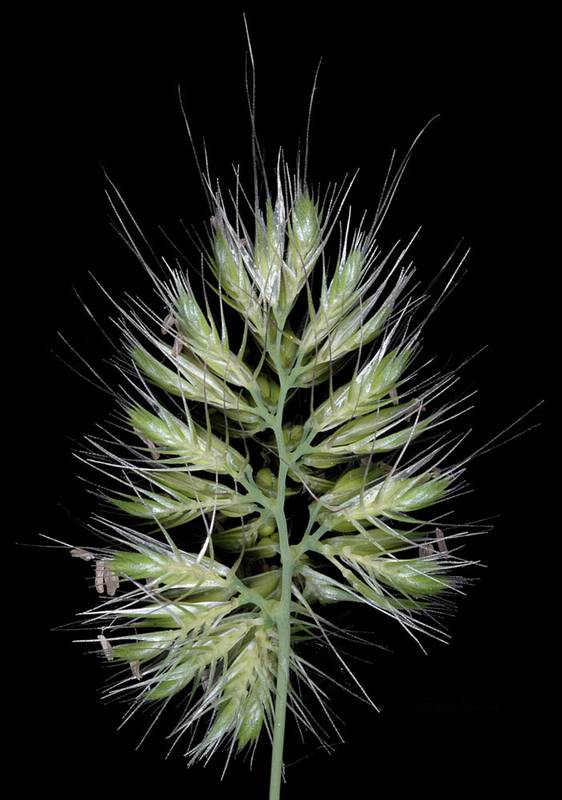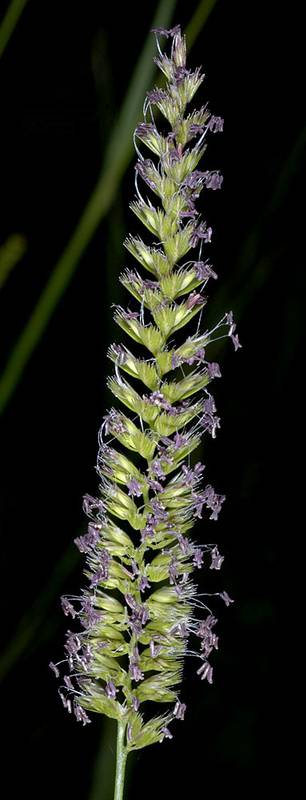Cynosurus echinatus
Cynosurus cristatus
bristly dog's-tail grass
crested dogtail
Sheaths open, inflated;
ligules 2-7 mm. long, obtuse;
blades flat, 2-5 mm. broad, the margins freed from the sheath at different levels.
Sheaths open, the upper glabrous, the lower puberulent;
ligules about 1 mm. long, truncate, glabrous;
blades flat to folded, 1.5-2.5 mm. broad.
Inflorescence a bristly, dense, ovoid panicle 1-4 cm. long;
spikelets in pairs on very short branches, one spikelet fertile and sessile, the other short-pedicellate and sterile; sterile spikelet with several lemmas similar to the keeled, long-pointed glumes; fertile spikelet 2-flowered, the upper flower sometimes rudimentary;
glumes strongly keeled and flattened, 5-6 mm. long, with awn tips 1-2.5 mm. long;
lemmas somewhat lopsided, about 5 mm. long, rounded, with an awn 3-10 mm. long.
Inflorescence a one-sided, spike-like panicle 3-8 cm. long and less than 1 cm. thick;
spikelets in pairs on very short branches, one spikelet fertile and sessile, the other short-pedicellate and sterile; sterile spikelet flattened and fan-like, 4-5 mm. long, consisting of glumes and 7-9 empty lemmas; fertile spikelet has glumes 2.5-3.5 mm. long, keeled and scabrous, with serrulate margins;
lemmas somewhat lopsided, rounded, about 4 mm. long, scabrous, with an awn tip about 0.5 mm. long.
Cynosurus echinatus
Cynosurus cristatus
- Local floras:
BC,
CA,
OR,
WA
- Local Web sites:
CalFlora,
CalPhotos,
Flora NW,
PNW Herbaria
WildflowerSearch
iNaturalist (observations)
USDA Plants Database
- LBJ Wildflower Center
- SEINet
- Plants of the World Online
- Encyclopedia of Life
- Wikipedia
- Google Image Search
- Local floras:
BC,
CA,
OR,
WA
- Local Web sites:
CalFlora,
CalPhotos,
Flora NW,
PNW Herbaria
WildflowerSearch
iNaturalist (observations)
USDA Plants Database
- LBJ Wildflower Center
- SEINet
- Plants of the World Online
- Encyclopedia of Life
- Wikipedia
- Google Image Search



